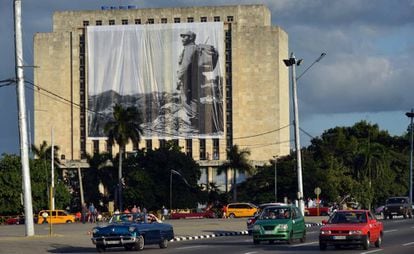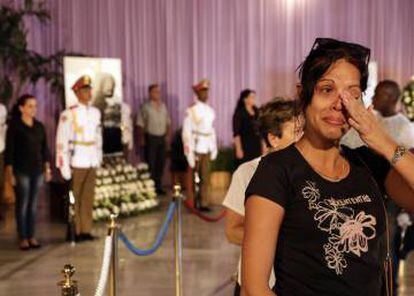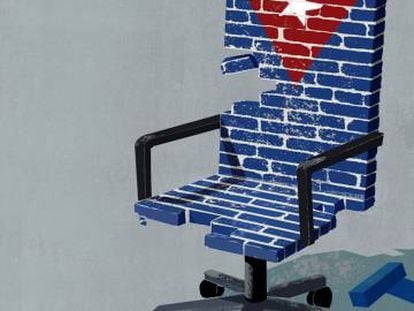Farewell, Fidel
Cubans start paying last respects to deceased leader, whose ashes will be taken to Santiago for burial

After the weekend of apathy that followed news of Fidel Castro’s death on Friday, Cuba has finally revved its engines for a final farewell to the man who embodied the Revolution. At 9am on Monday, as troops from the Revolutionary Armed Forces fired 21 artillery salvos simultaneously in Havana and Santiago de Cuba, the doors of the José Martí Memorial – that sanctorum of Cuban nationalism – were flung open so Cubans could file in and pay their last respects to the man who left an indelible mark on their lives.

“I came to find closure for part of my own mourning,” sobbed Nieves Carrillo, 66, as she emerged from the tribute room inside the memorial building. “Standing before you is the great-granddaughter of a slave named Tomasa Carrillo. I was able to study for a university degree, and as a poor, black woman I have come to give thanks to Fidel Castro.”
Children in school uniform, mixed-race women in white santería robes, stern-looking Interior Ministry officers, snowy-haired grandmothers... they all inched forward along a line that snaked out of sight outside the memorial tower. Inside, military guards flanked a photograph of Castro during his guerrilla days. Under the picture lay rows of flowers, but the urn containing his ashes was not on display.
I respect those who criticize him, but I never lost my faith in him
Libia Salazar, 53
After gazing at the picture, a few people could not hold back their tears.
“These are such intense feelings...,” said Eduardo Boullón, 84, wearing a cap from the militia battalion that he once belonged to. “I’m an old man who fought the bandits in the hills of Escambray in order to defend Fidel, and today I am crying. Ours was a lovely war.”
The memorial is fittingly located in Revolution Square, the same place where for thousands of hours, Castro – in a sign of his omnipresence, known simply to Cubans as “He” – delivered long lectures to generations of Cubans, praising Marxism in his high-pitched, hypnotic voice while tracing anti-imperialist figures in the air with his hands.

“He was ceremonial, he spoke with his words and with his hands. We went through some really hard times under him, and I respect those who criticize him, but I never lost my faith in him, even though I am an atheist,” said Libia Salazar, 53.
“I remember his voice in my head and I get goosebumps,” added Consorcio Castillo, 73.
Yet Cuba’s top brass was nowhere to be seen at the mausoleum. President Raúl Castro, who at age 85 is now tasked with leading the system’s uncertain transition into the 21st century, will show himself on Tuesday evening, when Cubans have been asked to return to the esplanade for one last, massive farewell to Fidel Castro. Hundreds of thousands of people – “perhaps a million,” according to one government member – are expected to attend.
Opposition shuns ceremony
“All tyrants’ funerals are very similar, you just have to review history a little,” wrote the activist José Daniel Ferrer, of Cuba’s National Patriotic Union.
"The official press says there are few people on the streets because they are mourning privately. The truth is, there is fear, a lot of fear," said Yoani Sánchez, editor of the online daily 14 y medio, which has been censored on the island.
After that collective act of catharsis, there will still be five official days of mourning left. On Wednesday, Castro’s ashes will be loaded onto a hearse and driven slowly to Santiago de Cuba, where the revolutionary’s remains are expected to arrive on Saturday.
The route is symbolic, as the hearse will follow the inverse journey made by Castro and his rebel column in 1959, from the eastern tip of the island to Havana.
In Santiago, the ashes will be laid to rest at Santa Ifigenia cemetery, inside a mausoleum close to the one holding the remains of the national hero, philosopher and writer José Martí. If the dead could talk, theirs would be a conversation of colossal proportions.
English version by Susana Urra.












































